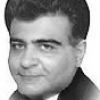Options for Imran's PTI very limited
All these likely served as signals that the PML(N) would be eased out and that the PTI was now the laadla, or favoured party.

Doctored” and “engineered” is how some describe the polls results. Then, large parts of the middle class consisting of doctors, engineers, etc. see the results as a move towards “naya Pakistan”. Though losers allege poll-day rigging, the main issue still involves alleged pre-election rigging which can’t be resolved by poll tribunals unlike the former.
Irrefutable proof of rigging would include videotapes of secret meetings or telephone calls or solid trails of money transfer, which are impossible to get unless a whistleblower emerges. But doubters like me can cite strong circumstantial proof of similarities to the 1990 polls and the now proven ISI-IJI scandal. These include controversial dismissals, mass defections from the PML(N), biased accountability and media curbs.
All these likely served as signals that the PML(N) would be eased out and that the PTI was now the laadla, or favoured party. Some say disgust with PML(N) misrule, especially among the many new youth voters, explains the PTI’s win. But this logic is weak as the latter’s provincial record was similar to the PML(N)’s — a few pluses but many more minuses. Also, the PTI is believed to have won by fielding allegedly unclean electables, like the PML(N), rather than new clean people.
Fans say at least its top man is honest. But we have actually been ruled mostly by honest top men who failed to end misrule and even harmed Pakistan badly (Ghulam Mohammed, Iskandar Mirza, Yahya, Bhutto, Zia and Musharraf). The bottom line is that a party seen as less corrupt but more likely to toe the Pindi line has replaced a party perceived as more corrupt but less servile to the powers-that-be.
Still, the options for the losers are limited as sans aid from secret quarters, street protest or Assembly boycott may fail. Thus, they may wait to strike after PTI’s honeymoon ends.
The options for the PTI are limited too. Despite an aiding poll climate, it’s a victor with a slim margin from an election that many see as rigged, that too after co-opting footloose independents. Its Assembly ranks include similar recent entrants, making its hold unstable.
It may not have to partner with a major party. The flip side of that plus, though, is that other parties may soon gang up against it to give it a tough time, as they already are.
Its hands are tied in most policy areas. The PML(N)’s mishandling of the external deficit may mean going to the IMF which could impose conditions that reduce growth and jobs and increase inflation. Its laudable aims of good regional relations are subject to veto by hawkish quarters. The US will expect it to deliver the Afghan Taliban. Legislatively, it will be hobbled by its lack of a two-thirds majority in the National Assembly and a simple one in the Senate. Its aim to deliver good governance is restricted by its low capacities. Yet, it will face high demands from the middle class given its promise of ushering in a new Pakistan and the limited grasp of even its educated fans about the structural issues that hobble fast progress in Pakistan. So, it too may fail like the PML(N) and PPP in resolving key challenges.
In addition, several minuses have now become part of politics. Acrimony among parties and across parties and unelected institutions is high. The perceived power of unelected institutions to form an alliance against elected ones to influence political outcomes has increased, given the upending of the largest party (PML-N). The image of the courts is controversial and the media’s freedom severely curtailed on sensitive issues. The establishment might feel even more unchecked in controlling foreign and security policies, even politics. Questions about the role of secret agencies in polls have re-emerged. If Imran was wise and a true democrat, he would foster good ties with other parties to make the PTI less prone to outside interference.
Conservative Punjab’s hold on politics has increased. The two largest parties and almost all key unelected institutions will be headed by conservative elements from Punjab. Sindh and Balochistan had returned centrist parties in a majority in 2013, unlike Punjab and KP. But the number of seats held by centrist parties has reduced there too and nationally. Finally, new extremist parties have entered the Sindh and Punjab houses.
Against these minuses, I can only cite the large number of female votes (though the number of female candidates was still low) and the smooth polling as opposed to the chaos in counting later. Thus, at best the 2018 polls represent half-steps forward in a few areas but two steps backwards in many more. I hope that the PTI disproves my prognosis as a social scientist and delivers a new Pakistan.
By arrangement with Dawn
